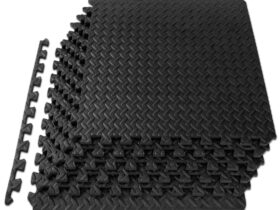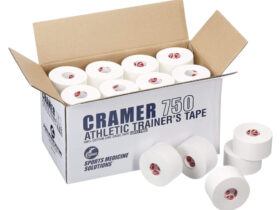Introduction:
Studio headphones are indispensable tools for musicians, audio engineers, podcasters, and content creators. While the market offers an abundance of high-end options, budget studio headphones provide a compelling alternative for those seeking quality sound without a hefty price tag. In this comprehensive guide, we’ll explore the intricate world of budget studio headphones, covering key features, considerations, top picks, and tips to help you find the perfect pair for your needs.
Understanding Studio Headphones:
Studio headphones differ from consumer headphones in their focus on accuracy, clarity, and neutrality. They serve as critical monitoring devices for professionals involved in audio production, enabling precise assessment of sound quality during recording, mixing, and mastering processes.
Closed-Back vs. Open-Back: Explain the differences between closed-back and open-back headphones, highlighting their respective advantages and disadvantages in studio environments. Closed-back headphones offer isolation and sound leakage prevention, ideal for tracking and recording. Open-back headphones provide a more natural soundstage but may leak sound and lack isolation.
Frequency Response: Discuss the significance of a flat frequency response in studio headphones, emphasizing the importance of accurate representation across the entire audible spectrum for reliable monitoring and mixing.
Impedance and Sensitivity: Clarify the concepts of impedance and sensitivity, explaining how they influence headphone performance and compatibility with audio devices. Lower-impedance headphones are more suitable for portable devices, while higher-impedance models may require dedicated amplification.
Noise Isolation and Comfort: Address the importance of noise isolation for immersive monitoring and comfort during extended use. Quality padding, adjustable headbands, and ergonomic designs contribute to a comfortable listening experience, enhancing productivity and focus.
Key Features to Consider Studio Headphones:
Sound Quality: Assess the overall sound signature, tonal balance, and detail retrieval capabilities of budget studio headphones. Look for models with clear, accurate sound reproduction across various genres and audio sources.
Durability and Build Quality: Evaluate the construction materials, build quality, and durability of studio headphones. Durable components, reinforced cables, and sturdy headbands ensure longevity and reliability in demanding studio environments.
Portability and Foldability: Consider the portability and foldability of studio headphones for on-the-go use and storage convenience. Foldable designs, detachable cables and compact form factors facilitate easy transportation and storage.
Cable Options: Explore headphone models with detachable or replaceable cables, offering flexibility for different studio setups and preferences. Straight, coiled, and braided cable options cater to various use cases and cable management needs.
Brand Reputation and Support: Research reputable headphone brands are known for quality craftsmanship, customer support, and warranty coverage. Established brands with a track record of excellence inspire confidence and provide peace of mind for consumers.

Top Picks for Budget Studio Headphones:
Sony MDR-7506: Highlight the Sony MDR-7506’s legendary status, balanced sound signature, and robust construction, making it a popular choice among professionals worldwide.
Audio-Technical ATH-M50x: Discuss the Audio-Technical ATH-M50x’s widespread acclaim, exceptional sound clarity, and swiveling ear cups for easy monitoring and single-ear use.
Sennheiser HD 280 Pro: Emphasize the Sennheiser HD 280 Pro’s excellent noise isolation, comfortable fit, and accurate sound reproduction, catering to critical listening and studio monitoring needs.
Beyerdynamic DT 240 Pro: Highlight the Beyerdynamic DT 240 Pro’s lightweight design, balanced sound profile, and durable construction, offering professional-grade performance at an affordable price point.
AKG K240 Studio: Discuss the AKG K240 Studio’s semi-open design, natural sound representation, and budget-friendly affordability, making it an ideal choice for entry-level studio applications.
Budget-Friendly Alternatives:
Tascam TH-02: Introduce the Tascam TH-02 as an entry-level option with surprisingly good sound quality, affordability, and suitability for beginner producers and casual listeners.
Samson SR850: Highlight the Samson SR850’s open-back design, expansive soundstage, and budget-friendly price point, providing an immersive listening experience for studio monitoring and mixing.
Super lux HD668B: Discuss the Super lux HD668B’s semi-open design, neutral sound signature, and comfortable fit, offering excellent value for budget-conscious consumers and amateur musicians.
Tips for Choosing the Right Pair:
Define Your Needs: Identify your specific requirements, preferences, and budget constraints when selecting studio headphones. Consider factors such as intended use, musical genres, and compatibility with audio equipment.
Test Before Buying: Whenever possible, audition different headphone models to evaluate sound quality, comfort, fit, and noise isolation. Personal listening preferences and subjective impressions play a crucial role in selecting the right pair.
Read Reviews and Comparisons: Research professional and user reviews, comparisons, and recommendations to gain insights into headphone performance, reliability, and value for money. Objective reviews and unbiased assessments help inform purchasing decisions.
Consider Future Upgrades: Anticipate future upgrades and expansions to your studio setup, choosing headphones with modular designs, upgradeable components, and compatibility with aftermarket accessories.
Maintenance and Care Studio Headphones:
Clean Regularly: Wipe down headphone ear pads, headbands, and cables with a soft, dry cloth to remove dust, dirt, and debris. Periodic cleaning maintains hygiene and prolongs the lifespan of studio headphones.
Store Properly: Store headphones in a clean, dry, and dust-free environment to prevent damage and degradation. Use headphone stands, cases, or hooks to organize and protect headphones when not in use.
Handle with Care: Handle studio headphones gently and avoid rough handling, excessive bending, or twisting of cables. Treat headphones as delicate audio equipment, minimizing the risk of accidental damage or wear and tear.
Monitor Wear and Tear: Inspect headphone components regularly for signs of wear and tear, including frayed cables, loose connections, and deteriorating ear pads. Replace worn-out parts promptly to maintain optimal performance and comfort.
Conclusion:
Budget studio headphones offer an affordable yet capable solution for professionals, enthusiasts, and aspiring musicians seeking high-quality sound reproduction and reliable performance. By considering key features, comparing top picks, and following practical tips, you can find the perfect pair of budget studio headphones to elevate your audio production endeavors.
Remember to prioritize sound quality, comfort, durability, and compatibility with your studio setup when selecting studio headphones. Whether you’re tracking vocals, mixing tracks, or mastering albums, the right pair of budget studio headphones can make a significant difference in your workflow and creative output.
Explore the diverse range of budget studio headphone available on the market and test different models, and trust your ears to guide you toward the perfect choice. With proper care, maintenance, and attention to detail, your budget studio headphones will become invaluable assets in your audio production toolkit, empowering you to master your mix with confidence and precision.











Leave a Reply